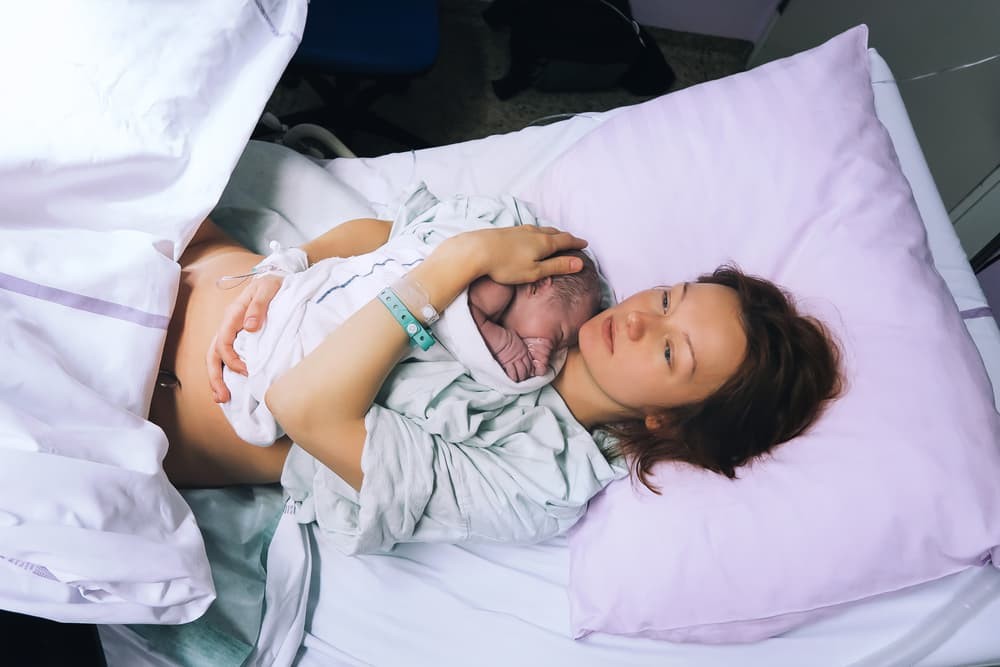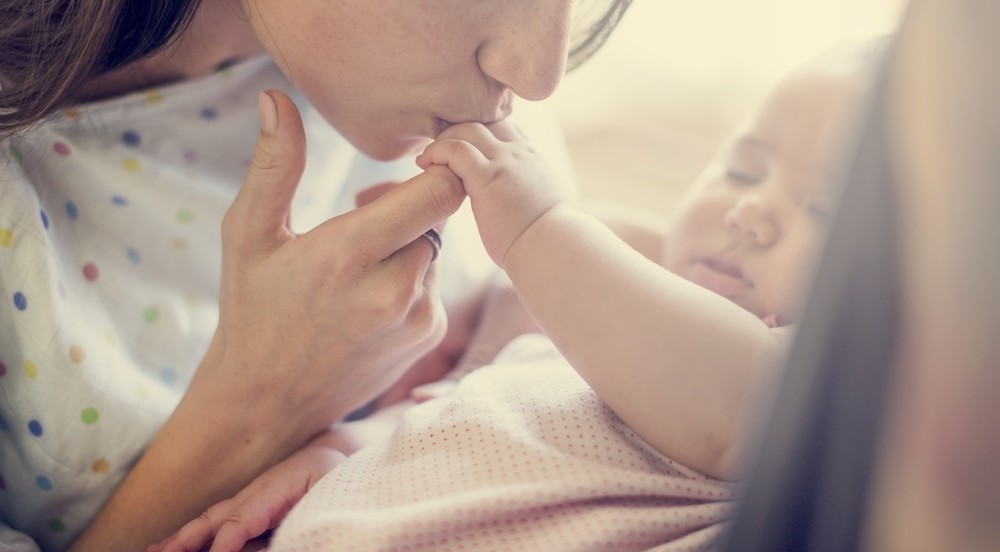3 Main Stages Of Natural Labor Every Future Mom Needs To Know About
The process of having a babyoccurs in several stages over many hours or even a few days-from early labor through delivering the baby and the placenta. During labor, contractions in your uterus open your cervix and move the baby into position to be born.
Let's discover what a true giving birth is going to happen by reading the whole this article from HappyMom.Life.

Stage One: Early, Active, and Transition
Early labor
Early labor is often the longest part of the birthing process, sometimes lasting 2 to 3 days. Uterine contractions:
- Are mild to moderate (you can talk while they are happening) and last about 30 to 45 seconds.
- May be irregular (5 to 20 minutes apart) and may even stop for a while.
- Open (dilate) the cervix to about 3 cm (1 in.). First-time mothers can have many hours of early labor without the cervix dilating.
It's common for women to go to the hospital during early labor and be sent home again until they are in active labor or until their "water" breaks (rupture of the membranes). This phase of labor can be long and uncomfortable.
Active labor
The active stage of labor starts when the cervix is about 3 cm (1.2 in.) to 4 cm (1.6 in.) dilated. This stage is complete when the cervix is fully effaced and dilated and the baby is ready to be pushed out.
Compared with early labor, the contractions during active labor are more intense and more frequent (every 2 to 3 minutes) and longer-lasting (50 to 70 seconds). Now is the time to be at or go to the hospital or birthing center. If your amniotic sac hasn't broken before this, it may now.
As your contractions get stronger, you may:
- Feel restless or excited.
- Find it hard to stand up.
- Not be allowed to eat or drink. Some hospitals let you drink clear liquids. Others may only allow you to suck on ice chips or hard candy.
- Want to start using breathing techniques or other ways to control pain and anxiety.
- Feel the need to shift positions often. This is good for you, because it improves your circulation.
- Want pain medicine, such as epidural anesthesia.
- Be given intravenous (IV) fluids.
Transition
The end of active labor is called the transition phase. As the baby moves down, your contractions become more intense and longer and come even closer together.
When you reach transition, your delivery isn't far off. During transition, you will be self-absorbed, concentrating on what your body is doing. You may be annoyed or distracted by others' attempts to help you but still feel you need them nearby as a support. You may feel increasingly anxious, nauseated, exhausted, irritable, or frightened.
A mother in first-time labor will take up to 3 hours in transition, and a mother who has vaginally delivered before will usually take no more than an hour. Some women have a very short, if intense, transition phase.

Stage Two: The Baby Is Born
The second stage is the actual birth, when the baby is pushed out by the contractions. This pushing stage can be as short as a few minutes or as long as several hours. You are more likely to have a fast labor if you have given birth before. During the second stage:
- Uterine contractions will feel different. Though they are usually regular, they may slow down to every 2 to 5 minutes, lasting 60 to 90 seconds. If your labor stalls, changing positions may help. If not, your doctor may recommend using medicine to stimulate (augment) contractions.
- You may have a strong urge to push or bear down with each contraction.
- You may need to change position several times to find the right birthing position for you.
- You can have a mirror positioned so you can watch your baby as the head comes through the vagina (called crowning).
- When the baby's head crowns, you will feel a burning pain. If this is happening quickly, your doctor may advise you not to push every time, which may give the perineum, which is the area between the vulva and the anus, a chance to stretch without tearing.
Your medical staff will be ready to handle anything unexpected. This is a time when your doctor or nurse-midwife will be deciding what is best for you and your baby.

Stage Three: The Placenta Is Delivered
- After your baby is born, your body still has some work to do. This is the third stage of labor, when the placenta is delivered. You will still have contractions. These contractions make the placenta separate from the inside of the uterus, and they push the placenta out. Your medical staff will help you with this. They will also watch for any problems, such as heavy bleeding, especially if you have had it before.
- You may be given some medicine to help the uterus contract firmly. Oxytocin (such as Pitocin) may be given as a shot or in a vein (intravenously) after the placenta is delivered. Oxytocin is given to make your uterus shrink and bleed less. (This is the same medicine that is sometimes used to make contractions more regular and frequent during labor.) Breastfeeding right away can also help the uterus shrink and bleed less.
- The third stage can be as quick as 5 minutes. With a preterm birth, it tends to take longer. But in most cases, the placenta is delivered within 30 minutes. If the placenta doesn't fully detach, your doctor or nurse-midwife will probably reach inside the uterus to remove by hand what is left inside. Your contractions will continue until after the placenta is delivered, so you may have to concentrate and breathe until this uncomfortable process is complete.
Photo Credit: Pinterest
>>>>> More Tips For Parenting in Thailand
>>>>> Discuss With Other Parents
Related Tips
Related Shop
Khet Bang Kho Laem , Bangkok
Pick up Reviews
SEE MOREShop by category
HAPPYMOM.LIFE
Shop Login
Welcome to HappyMom.Life
Please login to continue
Do not you have an account?
Shop Registration
Please fill in the form with valid information so we can verify your account.